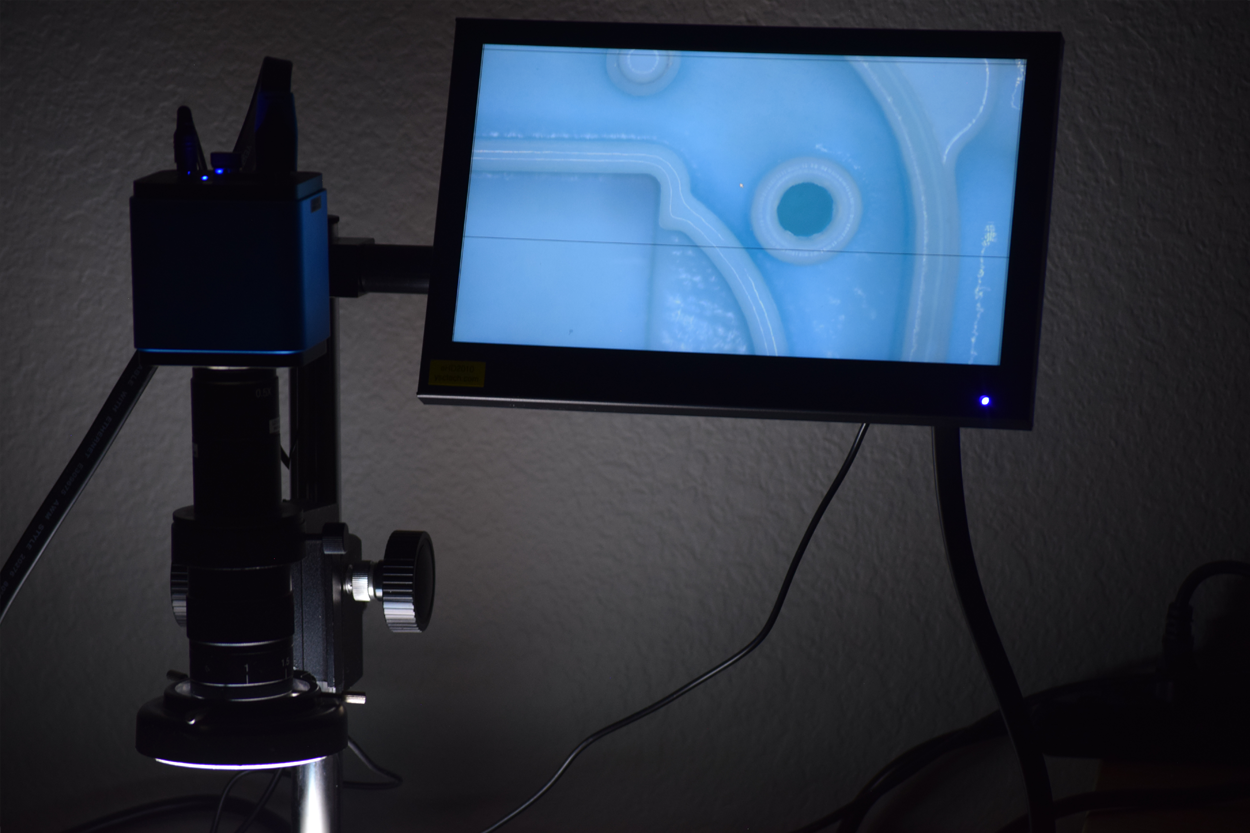Plastics can be assembled in a variety of ways: through mechanical means, through welding, and through bonding. Here we will talk about these methods and give examples of each.
Mechanical Joints
Mechanical joining of parts includes press fitting, snap fitting, and mechanical fastening. With press fitting, a part is inserted into an opening with slightly smaller dimensions, resulting in compressive forces in the inserted part and tensile forces in the mating part. Gears and wheels are commonly mounted on shafts using a press fit.
Snap fit joints involve features molded directly into parts such as snap hooks or beams, annular or ring snaps, ball and socket snaps, or torsional snap joints. Design considerations of some snap joints are covered here. Snap joints can be separable or inseparable. Separable joints are used when a product must be able to be disassembled at some point during its lifetime, such as a battery cover. Inseparable joints are used when a product will not need to be disassembled or when it would be hazardous to do so due to potential for electric shock, such as with an appliance.
Mechanical fasteners are used when snap fit joints are not feasible or appropriate and include screws, metal inserts, push-in fasteners, speed clips and nuts, rivets, studs, staples, and hinges. Types of screws include machine screws/nuts/washers and self-threading screws. Push-in fasteners have barbs that allow the fastener to be pushed in but prevent it from backing out. Speed clips and nuts push on but cannot be pulled off. One potential disadvantage of mechanical fastening is the use of holes or point locations of force, which result in areas of stress concentration in the plastic.
Welded Joints
Welding of plastic parts results in joints that are inseparable. Welding types include ultrasonic, vibration welding, spin/rotational, hot tool, induction, resistance, hot gas, and extrusion welding.
Ultrasonic Welding is used extensively in the automotive, appliance, medical, and toy industries. Low amplitude (.025-.125 mm), high frequency (15-40 kHz) vibrational energy creates intermolecular friction and heat to melt parts together. Energy directors are molded directly into the mating surface of the part in contact with the US welder horn to help focus the energy and create a localized bond. For more on ultrasonic welding go here and for a good explanation of ultrasonic vs vibration welding go here.
Vibration Welding is used for medium to large-sized parts, and parts that have large clearances in the direction of vibration. Parts are rubbed together at low frequency (120-240 Hz) and high amplitude (0.4-4 mm) under pressure until the contacting surfaces melt, then the parts are held under pressure while the weld solidifies and cools. More on vibration welding can be found here.
Spin/Rotational Welding is used for joining circular parts, small or large (up to 24 inches in diameter). One part is held stationary while the mating part is rotated under pressure with respect to the stationary part. The surfaces in contact melt under the resulting frictional force, and the parts are held together under pressure while the weld cools and solidifies. More on spin welding can be found here.
Hot Tool Welding involves using a heated tool to melt surfaces to be joined, then applying pressure to the two parts to be joined while the weld cools and solidifies. More on hot tool or hot plate welding can be found here.
Induction/Electromagnetic Welding involves using electromagnetic energy to melt a gasket or preformed magnetic material in between parts to be joined. The magnetic material consists of a base polymer that is compatible with the polymer of the parts to be joined, and finely dispersed micron sized particles of iron, iron oxide, stainless steel, or other magnetic materials. More on induction welding can be found here.
Resistance Welding uses heat generated from electrical current running through wire to heat and melt surfaces to be joined. Once the surfaces are joined, pressure is applied to the two components while the weld cools and solidifies. For more information on resistance welding in general go here.
Hot Gas Welding uses heated air or nitrogen to melt the surfaces to be welded as well as a plastic welding rod that is pushed into the joint, which is designed with a groove or v to accommodate the melted weld fill material. Pressure is then applied to the weld as it cools and solidifies. More on hot gas welding can be found here.
Extrusion Welding is similar to hot gas welding, except that the weld fill material is softened through extrusion. Once the weld fill material is deposited into the groove or “V” of the joint, pressure is applied to the weld until it cools and solidifies.
Adhesive Bonding
Bonding of plastic parts using adhesives means creating intermolecular bonds between plastic parts and an adhesive substance, or between plastic parts themselves. Dissimilar materials can be bonded this way, and adhesive-bonded parts are generally inseparable. One advantage of adhesive-bonded parts is that a water-tight seal can be formed.
Liquid Adhesive Bonding involves dispensing a liquid glue in between parts and allowing it to cure with time. Curing times range from minutes to hours.
UV Bonding involves dispensing a liquid adhesive between parts and polymerizing the adhesive using UV light. Parts must be clear for UV light to pass through, and curing times are short, between 1-5 seconds.
Solvent bonding involves dispensing a liquid solvent between parts, fixturing them together so they can’t move, and allowing the solvent to evaporate. The solvent reacts chemically with the surface of each part to create an intermolecular bond between the surfaces. Curing times are generally in the minutes to hours range.
This link provides an excellent approach to selecting a plastics assembly method.
Please contact us for help with your current plastic design!

